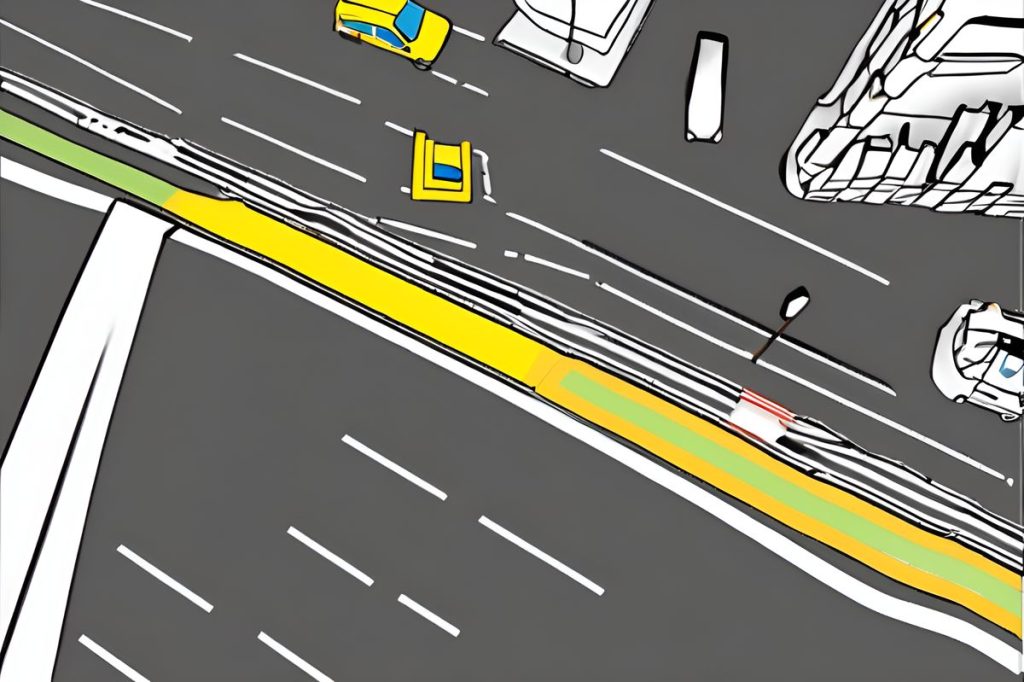A man, 38, was critically injured in a head-on collision with a lorry on a road between Polis Chrysochous and Argaka. Local authorities are investigating the cause of the tragic incident, highlighting the ongoing concerns regarding road safety and the need for preventative measures such as attentive driving, improved road designs, and community awareness campaigns.
What can be done to prevent head-on collisions and ensure road safety?
To prevent head-on collisions and enhance road safety:
1. Avoid distracted driving and driving under the influence.
2. Improve road designs with median barriers and better signage.
3. Enroll in driver education programs to learn attentive driving.
4. Invest in infrastructure maintenance for safer driving conditions.
5. Run community awareness campaigns on the importance of seat belts and obeying speed limits.
The Incident
On a recent Friday evening, turmoil struck on a road between Polis Chrysochous and Argaka. A man, 38, found his regular drive turn tragic in a severe head-on collision with a lorry. The man was behind the wheel of his car when fate took a turn for the worse. While the exact cause is yet to be unraveled, local authorities have plunged into an extensive investigation.
Following the collision, emergency services were swift to respond. The man, in critical condition, was transported to the Paphos general hospital. It’s there, within the confines of the intensive care unit, that he battles for his life. His condition, a stark reminder of the fragility of human life, has left a community in shock and hoping for his recovery.
Road Safety Analysis
Incidents such as this bring to light the ongoing concerns regarding road safety. Statistics indicate that head-on collisions, while less common than other types of crashes, often result in more serious injuries. They account for a significant percentage of fatalities among all motor vehicle accidents.
Several factors contribute to such accidents, including but not limited to distracted driving, impairment due to alcohol or drugs, and poor road conditions. The design of the road itself can also play a significant role in preventing or facilitating head-on collisions. Measures like median barriers, rumble strips, and better signage have been known to reduce these tragic events.
Emergency Response and Hospital Care
The role of first responders in critical accidents is invaluable. Their rapid response and expert care during the ‘golden hour’—the first hour after a traumatic injury—are often the difference between life and death. Once at the hospital, the intensive care unit (ICU) becomes a critical player in the fight for survival. The ICU team works around the clock, providing life support and monitoring vital signs to ensure the best possible outcome.
Highly trained medical professionals specialize in the care of critically injured patients, employing advanced medical technology and procedures. The road to recovery can be long and arduous, but the dedication of these healthcare workers often leads to miracles in the most desperate of circumstances.
Preventative Measures
Prevention is key to reducing the number of traffic collisions. Driver education programs emphasize the importance of attentive driving and the dangers of driving under the influence. Infrastructure improvements are equally important. Governments invest in smart road designs and maintenance to create safer driving conditions.
Community awareness campaigns also play a significant role. They encourage drivers to take ownership of their role in road safety. Be it through seat belt use, adherence to speed limits, or avoiding distractions like mobile phones, small changes can lead to significant reductions in road accidents.
What can be done to prevent head-on collisions and ensure road safety?
To prevent head-on collisions and enhance road safety, it’s important to:
1. Avoid distracted driving and driving under the influence.
2. Improve road designs with median barriers and better signage.
3. Enroll in driver education programs to learn attentive driving.
4. Invest in infrastructure maintenance for safer driving conditions.
5. Run community awareness campaigns on the importance of seat belts and obeying speed limits.
What are the common causes of head-on collisions?
Common causes of head-on collisions include distracted driving, impaired driving (alcohol or drugs), speeding, weather conditions, fatigue, and reckless overtaking. Poor road conditions and inadequate signage can also contribute to these tragic accidents.
What role do emergency responders and hospitals play in critical accidents?
Emergency responders play a crucial role in providing immediate medical care and transportation to injured individuals after accidents. The ‘golden hour’ after a traumatic injury is vital for survival. Hospitals, especially intensive care units (ICUs), provide specialized care to critically injured patients, monitoring vital signs and employing advanced medical technology to ensure the best possible outcomes.
How can communities contribute to preventing road accidents?
Communities can contribute to preventing road accidents by participating in community awareness campaigns that promote safe driving practices. Encouraging seat belt use, obeying speed limits, and avoiding distractions while driving are key actions that individuals can take to reduce the number of accidents on the road. Additionally, reporting hazardous road conditions to local authorities can help improve overall road safety.

